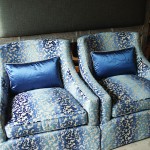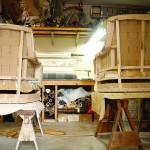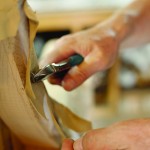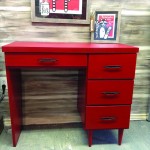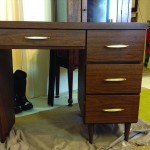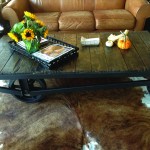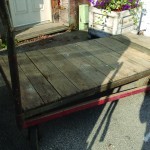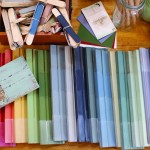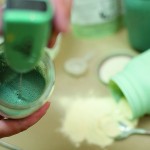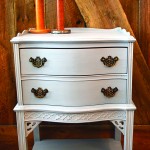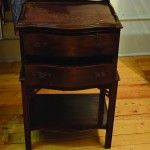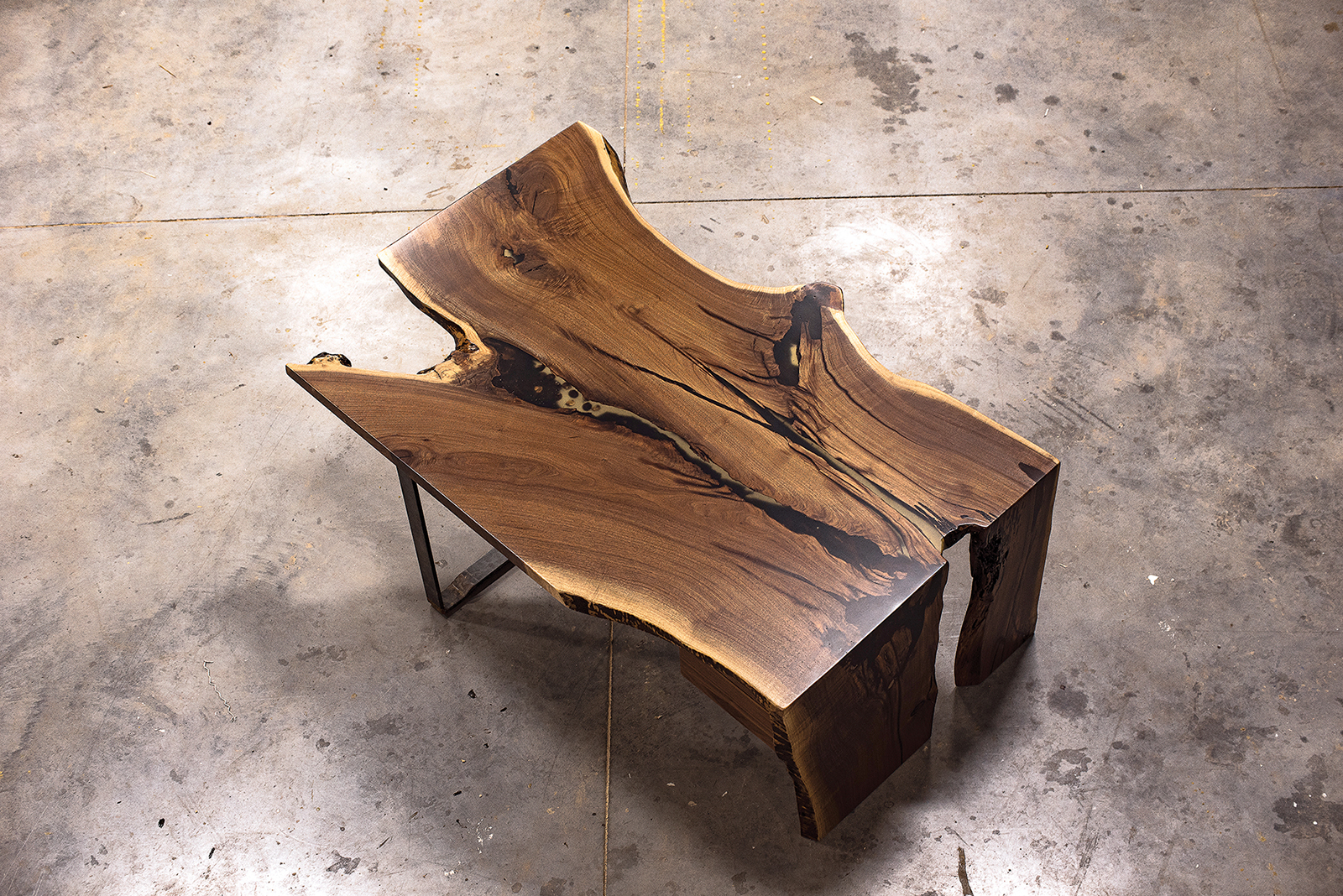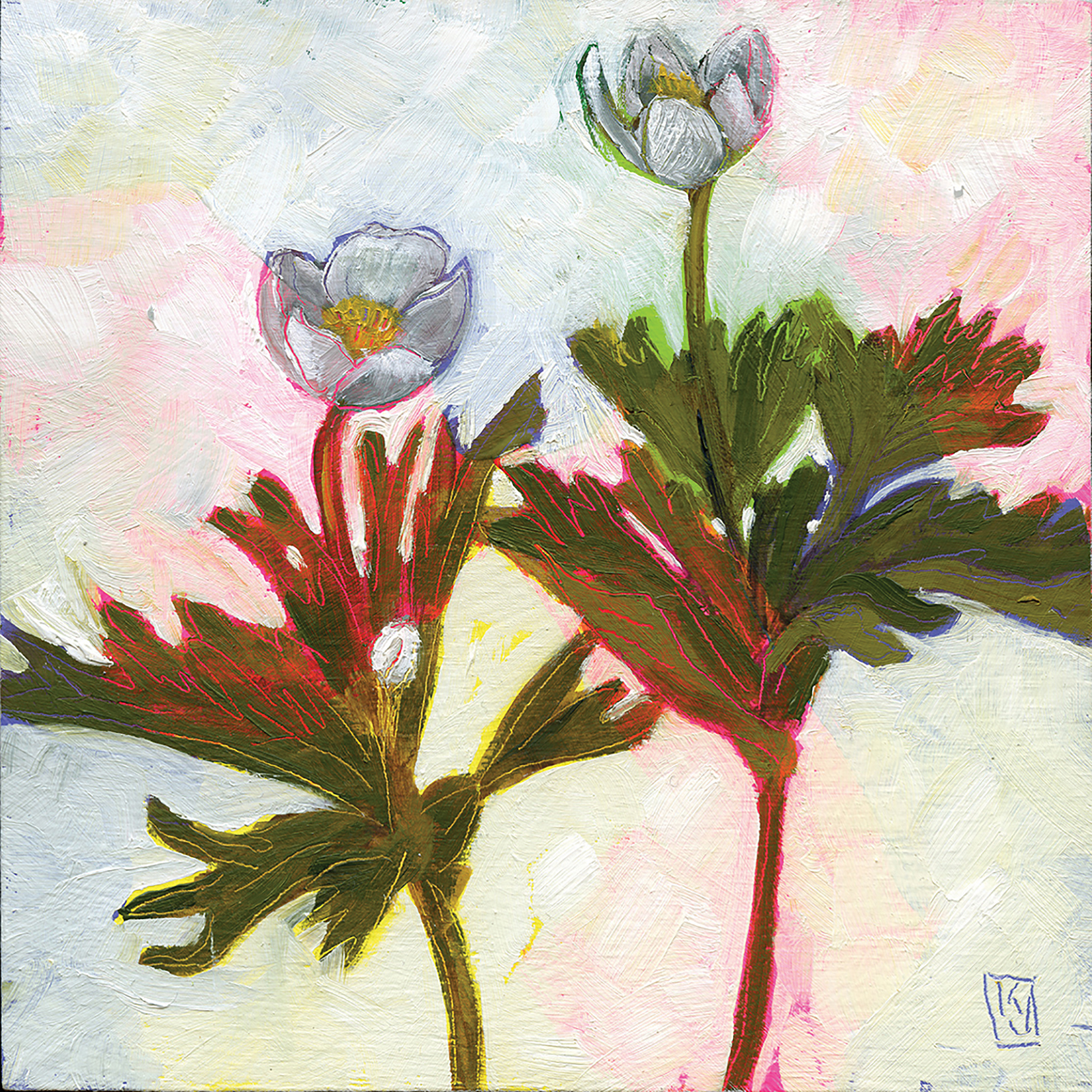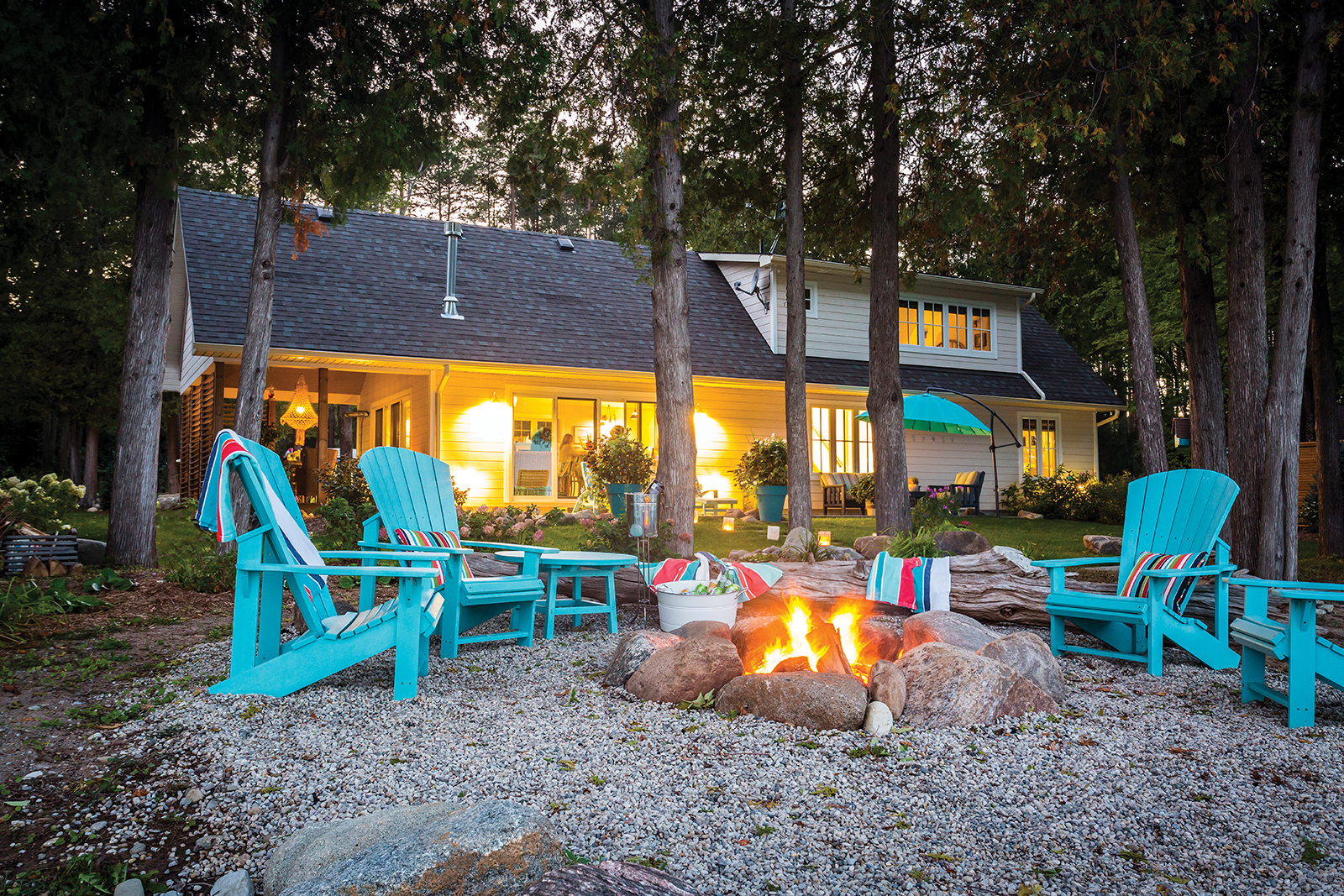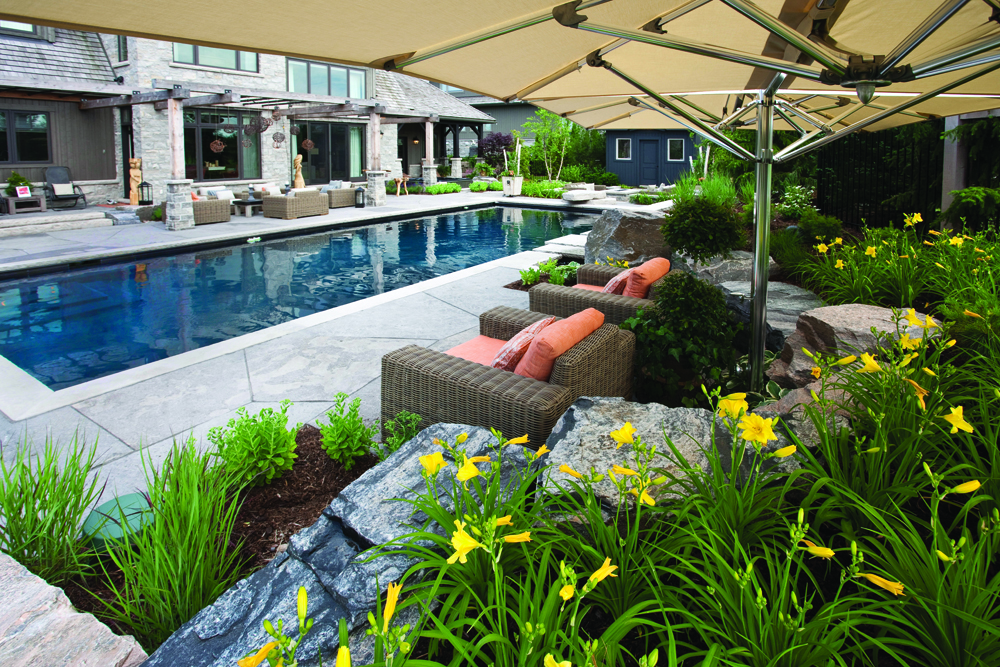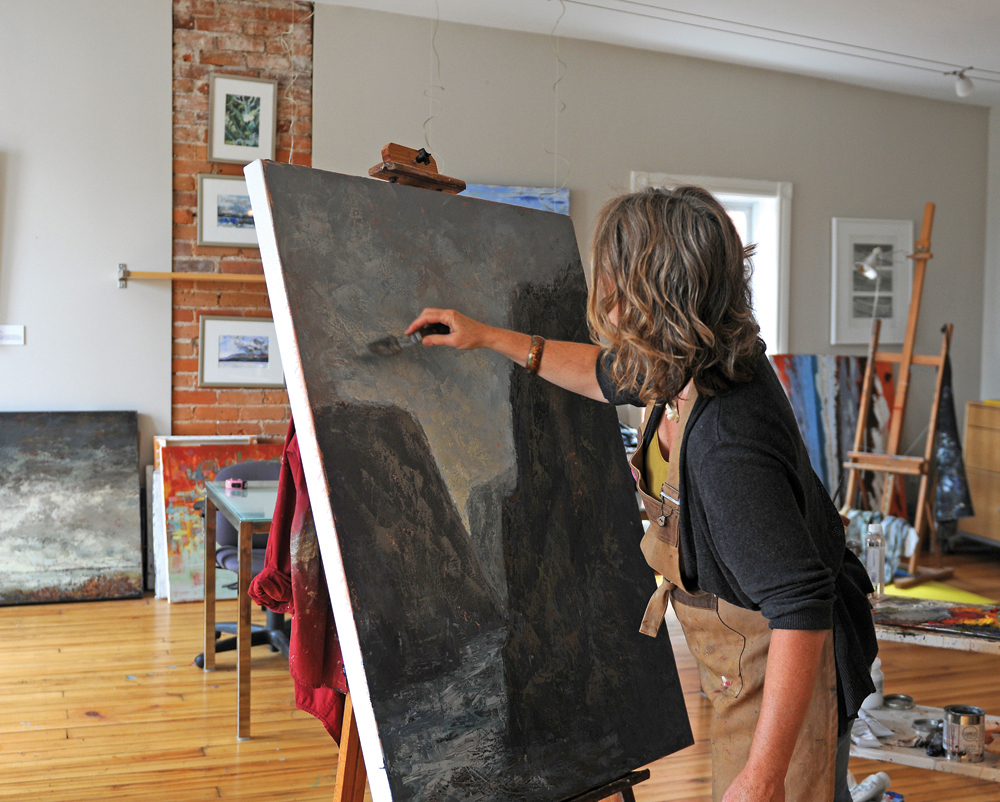The growing trend of giving new life to old stuff
story by Judy Ross ❧ photography by Kristie & Brenden Woods
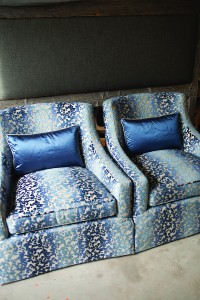
At our cottage we have been ‘upcycling’ for decades without even knowing it. Take, for instance, the pair of pine daybeds in our screen porch that have been repurposed many times. They were built as a house gift in the 1960s by a carpenter cousin from Scotland when he came for a summer visit. For many years they provided seating in the living room. When we inherited new sofas (also upcycled), the daybeds moved to my daughter’s house for a few years. Then we added a new screen porch at the cottage and the daybeds moved back. This time I painted the pine bases white and re-covered the cushions in outdoor fabric. They will probably be there forever. My Scottish cousin died many years ago, but his daybeds live on.
And that’s the point of it all. When something is well made it should have a long life. Any piece of furniture made in the past is generally a much better product. Things were built to last using the best materials available and intended to be passed down from one generation to the next. This old-style craftsmanship doesn’t exist much anymore and most of our store-bought furniture is factory assembled in China and Vietnam. Very few furniture manufacturers still exist in North America.
This new trend to upcycle old well-made furniture is driven by a generation of millennials who are socially and ecologically conscious, according to Laurie Severn, owner of Heirloom 142, a Creemore store that promotes and inspires the renewal of old furniture. “Often they have inherited pieces from their grandparents,” she says, “and they recognize the workmanship but don’t necessarily like the finish. They want to make it their own so they paint it and create something far more interesting than any ‘out of the box’ style furniture.”
Severn’s interest in upcycling began in exactly this way when she inherited her grandmother’s furniture. She had been living in Europe for 14 years (Paris, Spain and the south of France) and became aware of the interesting pieces of old painted furniture that add such character to the homes there. “My grandmother’s furniture was 1940s golden oak” she explains, “and I didn’t like the finish at all. I painted it all white. It’s still being used at the cottage.”
As a growing ‘green’ trend, upcycling is vitally important because it keeps materials out of landfills. And it’s not just furniture that can be saved from the dump. One glaring U.S. statistic claims that 14.3 million tons of textiles were sent to landfill in 2012. Reversing this trend has empowered a new breed of socially conscious companies to create new products out of textiles that might end up being discarded. One of the criteria for successful upcycling is that the products must be imaginative and stylish, like the nifty looking duffle bags and satchels that are made from discarded sailcloth and the windproof jackets made from salvaged hot air balloon material. All have that definite ‘cool’ factor. Online marketplaces like Etsy and ArtFire are good sources for a variety of inspired upcycled items.
The ultimate goal of upcycling is not just to re-love old things, but to use an object in a new way (‘recycling’, on the other hand, involves breaking down the original material and making it into something new.) Enterprising individuals are finding ways to re-use old sporting equipment, turning wooden tennis racquets into mirrors, downhill skis into wine racks. But most upcycling involves furniture. People like Severn are committed to upcycling in the hope that we will look at our old furniture and see new possibilities. Often the biggest drawback to the old world pieces is the dark wood, which is sometimes referred to disparagingly as ‘brown furniture.’
“I sell white paint all day long,” says Lisa Proctor, who co-owns Baywood Designs, a furniture paint studio in Thornbury. She not only sells paint (both Miss Mustard Seed milk paint and Annie Sloan chalk paint), she will also custom paint old furniture for customers. She is encouraged by what she sees as a rejection of the disposable mindset and a real interest in the ‘cheap and cheerful’ approach to decorating.
“I have always been a believer; it’s my mantra,” Proctor notes, adding, “I was in vintage clothing before this.” Her store features inspiring examples of repurposed furniture. When I visited she showed me a charming cherrywood balloon-back chair built in the 1930s. Proctor whitewashed it with chalk paint, reupholstered the seat and made a frilled cotton slipcover that can be used in summer.
Making new slipcovers or reupholstering old sofas and chairs has long been an upcycling option, a way to give furniture a new lease on life. But when a new sofa sells for less than it costs to reupholster an old one it becomes a difficult economic choice. The trend to upcycle is helping people appreciate old-style craftsmanship and, once again, reupholstery is becoming a preferred option.
“It’s definitely on the upswing,” maintains Thornbury-based Wayne Dziedzic, who has been in the upholstery business for 45 years, “and I think it is because people are inheriting things that they don’t want to get rid of. Sometimes there’s a sentimental attachment to a certain piece of furniture but also they are beginning to recognize the value of quality construction. If the frame is good it is worth the investment.”
At the Shabby Shack Boutique in Clarksburg, owner Joanne Steele is also promoting the romance and charm of beautiful objects from the past. Her store is filled with inspiration. She carries the Cottage Paint line, a chalk/clay based paint, and offers workshops where anyone can bring in a small piece of furniture like a nightstand or a stepstool and paint it, stencil it, put on new knobs – anything to revive it and make it a unique piece.
“We also offer a DDIY (Don’t Do It Yourself) service here, which appeals to people who don’t have the time or the interest in doing the work themselves,” says Steele. She will tackle anything from headboards to hutches and her website features a comprehensive price list.
So with all these finishing products available in nearby shops and supportive help at hand in the form of workshops, online tutorials and professionals who will do the work for you, why not rethink your tired old furniture? A refreshing coat of paint can give new texture and vitality to the most boring old pieces. Follow the trend to upcycling, where the mantra is “don’t take it to the dump … paint it and make it a design statement.”
Paint It!
Tips on choosing your paint
The upcycling trend has spawned many paint products purposely created to revitalize tired old furniture. All of these decorative paints give a lovely finish reminiscent of Old World antiques. They’re eco-friendly and user-friendly, promising to make it fun and easy to repurpose an item that might otherwise end up being thrown away. All the paints dry quickly and, because they’re water based, clean-up is easy using soap and warm water. In-store workshops, available in shops that sell the paints, allow you to let loose your imagination and come away with a one-of-a-kind, personalized piece of furniture.
Milk Paint
This is the original paint used by pioneers. It’s called milk paint because it contains casein, which is milk protein. Environmentally friendly, it contains no VOCs (volatile organic compounds that can enter the air). It is generally sold as a powder, which is mixed with water. The finish is semi-opaque, a cross between stain and paint. It’s easy to acquire an authentic distressed look with milk paint. Miss Mustard Seed (aka Marian Parsons who lives in Pennsylvania) has created a huge following as a blogger. Her best-selling milk paint powder comes in a rich range of colours. She is known for reinventing the distressed, or chippy, look that is acquired by partially rubbing off the paint.
Chalk Paint
Britian’s Annie Sloan has a passion for decorative painting and developed her revolutionary chalk paint over 20 years ago. Made of calcite, talc and pigment, it’s called chalk paint because of its chalky, whitish appearance (Sloan coined the term). Her paint is user-friendly and eco-friendly (no VOCs and no odour) and has been a favorite with DIYers for years. Chalk paint rarely requires any prep, gives a velvety matte finish, and can be used indoors or out on just about any surface. Annie Sloan chalk paints are only available in a hand-picked selection of small independent stores.
Mineral Paint
Fusion is a water-based mineral paint made in Canada and similar to chalk paint. It comes in liquid form in a great range of historic colours and is easy to apply with little prep work required. Ready mixed, it is a little thinner than chalk paint and goes on easily. Fusion doesn’t require any topcoat and dries quickly to a smooth matte finish. You can get a distressed finish by using a beeswax block between coats. It is sold with a line of accompanying products (stencils, brushes, gilding paste, antiquing glaze, and a transfer gel that allows you to transfer any printed image to your piece).
It’s a testament to the popularity of upcycling that we have local suppliers of all three types of paint. So there’s no excuse not to take that old piece of furniture out of storage and turn it into a new family heirloom. ❧






